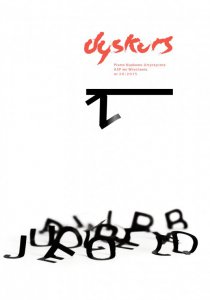Artistes/copistes
ARTIST – COPYIST
Author(s): Pascale BorrelSubject(s): Language and Literature Studies, Literary Texts, Fine Arts / Performing Arts
Published by: Akademia Sztuk Pięknych im. Eugeniusza Gepperta we Wrocławiu
Keywords: artist; copyist
Summary/Abstract: Simon Hantai, Allen Ruppersberg, Bruno Di Rosa, Gérard Collin-Thiébaut, Sherrie Levine copied the Bible, philosophical and literary texts, (Walden,Henry David Thoreau, Flaubert’s Madame Bovary, Journal Amiel...). Following existing texts, these artists work looks like ‘banal, humble and mindless’ copyist work. Although in some cases copying is part of the painting– as in Peinture (Écriture rose) by Simon Hantai – produced mostlywith a ballpoint pen on plain paper – as if the artists wanted to emphasizethe trivial, time-consuming and monotonous nature of his/her effort andevoke the atmosphere of the school classroom of distant times. Allen Ruppersberg and Bruno Di Rosa indeed refer to school experience,when they declare that rewriting allowed them to ‘learn how to write’, just as copying masters allow beginners to learn to paint. But while copying allows us to establish organic relationship with the text, then theprocess of copying the text is not about maintaining certain tradition: itis rather about the role that language plays in the field of visual arts startingfrom the sixties. It contributes to the revaluation of values usually connected with art-pieces, such as originality, expression of subjectivity,etc. In numerous comments provoked by the copyist who appears in literature (Bouvard et Pécuchet, Bartleby ...), there is a subversive nature ofthis labor-intensive and mechanical actions – when it is practiced in art. Copying is a long-term job; successive lines of letters fill the pages of notebooks,creating a ‘full-bodied’ art-piece in the literal sense of the word. The quantitative aspect is carried out in various ways. If the point is tovisualize the copy of an entire novel, and in order to embed the importanceof work for systematic and ‘mandatory’ implementation, or in orderto reach make more opportunity than necessity – copying allows us to experience the passage of time: the time that is spent on this completelyanachronistic act; time spent without any justification.
Journal: DYSKURS Pismo Naukowo-Artystyczne ASP we Wrocławiu
- Issue Year: 2016
- Issue No: 1 (20)
- Page Range: 92-197
- Page Count: 16
- Language: French

